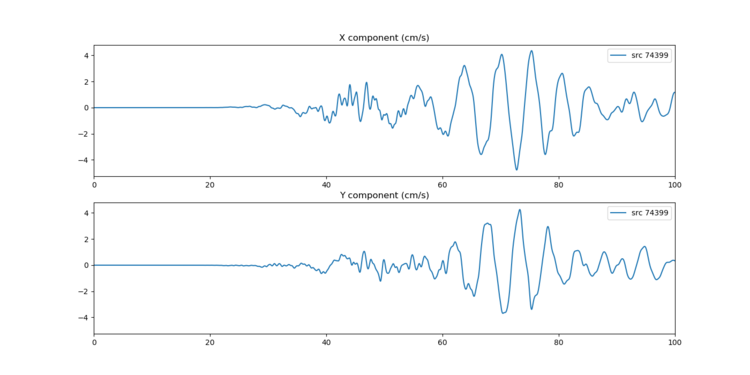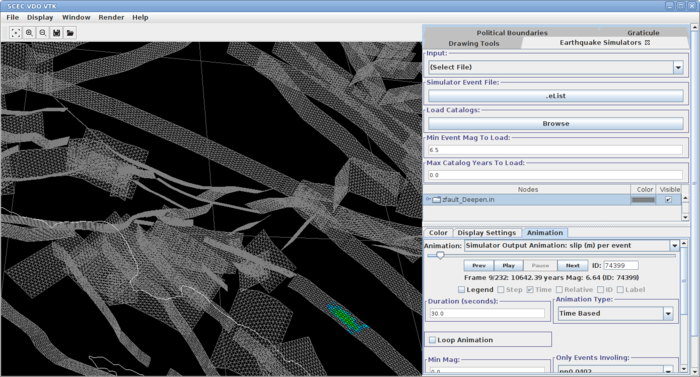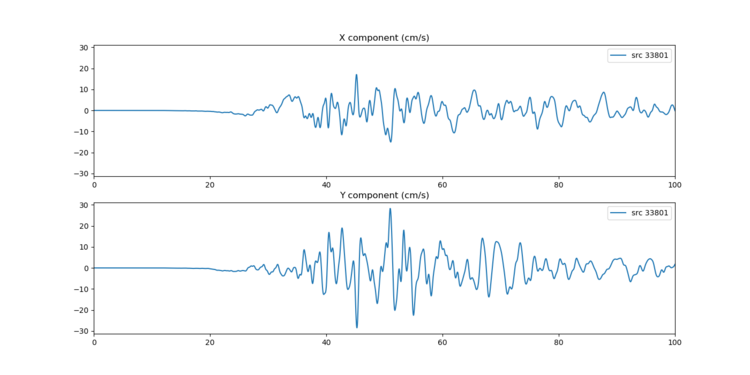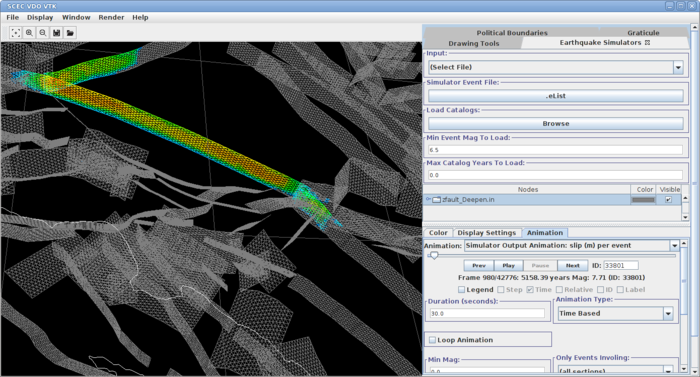Difference between revisions of "RSQSim CyberShake"
| Line 7: | Line 7: | ||
=== Rupture hierarchy === | === Rupture hierarchy === | ||
| − | + | RSQSim catalogs generate ruptures on triangular elements. Those elements each have an associated UCERF3 fault subsection, which in turn has an associated fault section (e.g. Mojave S). GMPE comparisons use the associated UCERF3 subsections (after applying a filter to remove subsections for which only a few elements participate). Here is the structure for the RSQSim ERF: | |
| + | |||
| + | *Source: all ruptures which involve the same set of UCERF3 fault sections (aka 'parent sections'). Source names are all of the sections involved, and sources are sorted alphabetically | ||
| + | *Rupture: an individual RSQSim rupture (with it's own full slip/time history) that occurred in the RSQSim catalog. Ruptures are sorted by magnitude (increasing) | ||
| + | *Rupture Variation: there is 1 rupture variation for each rupture, as each rupture has as slip/time history from RSQSim | ||
=== Database changes === | === Database changes === | ||
| Line 22: | Line 26: | ||
*A new version of DirectSynth, DirectSynth_RSQSim, was created, which takes in an input file consisting of a list of SRFs for processing. | *A new version of DirectSynth, DirectSynth_RSQSim, was created, which takes in an input file consisting of a list of SRFs for processing. | ||
| − | == Small-scale | + | == Small-scale catalog, ERFID=42 == |
| + | |||
| + | Initially, we are using a small RSQSim catalog for testing on 4 CyberShake sites (USC, PAS, WNGC, SBSM). | ||
| + | |||
| + | Catalog details: | ||
| + | * Name: Bruce 2457 | ||
| + | * Average element area: 1.35 km^2 | ||
| + | * Min Mag Considered: 6.5 | ||
| + | * Num Events: 41829 M>=6.5 events (2947 sources) | ||
| + | * Catalog Duration Used: 187,782.42 years | ||
| + | * More information: https://github.com/kevinmilner/rsqsim-analysis/tree/master/catalogs/rundir2457 | ||
| + | |||
| + | === Input file locations === | ||
| − | + | * SRF files: /home/scec-02/kmilner/simulators/catalogs/rundir2457/cybershake_inputs | |
| + | * Point files: /home/scec-02/kmilner/simulators/catalogs/rundir2457/cybershake_inputs | ||
| + | * Catalog/ERF Mappings: /home/scec-02/kmilner/simulators/catalogs/rundir2457/erf_mappings.bin | ||
| + | * ERF Metadata XML: /home/scec-02/kmilner/simulators/catalogs/rundir2457/erf_params.xml | ||
=== Test seismograms === | === Test seismograms === | ||
Revision as of 01:08, 7 February 2018
We are planning to perform CyberShake simulations using RSQSim as the ERF. This page documents the decisions and results.
Contents
Modifications from UCERF2 ERF
The biggest differences from the UCERF2 ERF is that RSQSim ruptures don't neatly fall into the source/rupture/rupture variation hierarchy, and the rupture surfaces are UCERF3 surfaces, so they fall on a triangular, not rectangular grid.
Rupture hierarchy
RSQSim catalogs generate ruptures on triangular elements. Those elements each have an associated UCERF3 fault subsection, which in turn has an associated fault section (e.g. Mojave S). GMPE comparisons use the associated UCERF3 subsections (after applying a filter to remove subsections for which only a few elements participate). Here is the structure for the RSQSim ERF:
- Source: all ruptures which involve the same set of UCERF3 fault sections (aka 'parent sections'). Source names are all of the sections involved, and sources are sorted alphabetically
- Rupture: an individual RSQSim rupture (with it's own full slip/time history) that occurred in the RSQSim catalog. Ruptures are sorted by magnitude (increasing)
- Rupture Variation: there is 1 rupture variation for each rupture, as each rupture has as slip/time history from RSQSim
Database changes
- In the Ruptures table, we are using the square root of the average element area for GridSpacing - basically, the side length if they were on a rectangular grid.
- In the Ruptures table, we are setting NumRows and NumCols to 0, but using the correct value for NumPoints.
Input file changes
- Since the rupture geometry files also expect GridSpacing, NumRows, and NumCols, we are using the same approach as in the database. GridSpacing is replaced by AveArea, and NumRows and NumCols are replaced by NumPoints.
Code changes
- A new version of DirectSynth, DirectSynth_RSQSim, was created, which takes in an input file consisting of a list of SRFs for processing.
Small-scale catalog, ERFID=42
Initially, we are using a small RSQSim catalog for testing on 4 CyberShake sites (USC, PAS, WNGC, SBSM).
Catalog details:
- Name: Bruce 2457
- Average element area: 1.35 km^2
- Min Mag Considered: 6.5
- Num Events: 41829 M>=6.5 events (2947 sources)
- Catalog Duration Used: 187,782.42 years
- More information: https://github.com/kevinmilner/rsqsim-analysis/tree/master/catalogs/rundir2457
Input file locations
- SRF files: /home/scec-02/kmilner/simulators/catalogs/rundir2457/cybershake_inputs
- Point files: /home/scec-02/kmilner/simulators/catalogs/rundir2457/cybershake_inputs
- Catalog/ERF Mappings: /home/scec-02/kmilner/simulators/catalogs/rundir2457/erf_mappings.bin
- ERF Metadata XML: /home/scec-02/kmilner/simulators/catalogs/rundir2457/erf_params.xml
Test seismograms
Seismograms were synthesized for site USC (1 Hz) for two RSQSim events.



